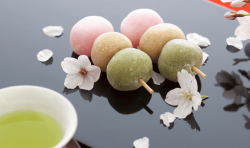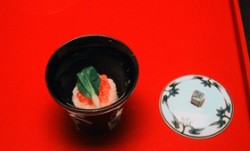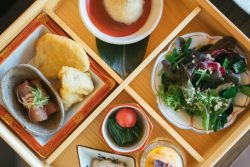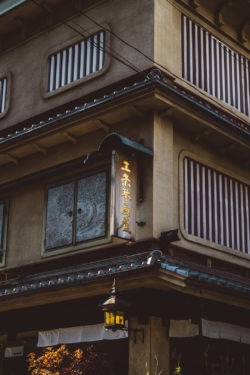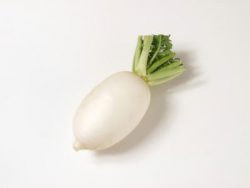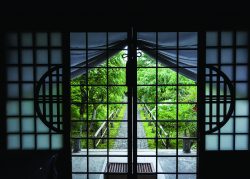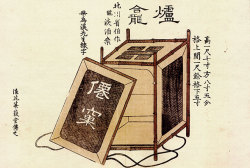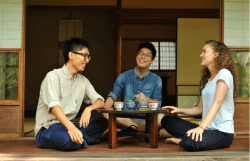Tea & Food
Where tea stirs remembrance
In a current landscape dotted with fast-food hegemony and the rapid erosion of lazy afternoons, is nostalgia enough to carry forth the legacy of Irani cafés in India?
Read MoreThe world of Japanese dango
How much do you really know about this quintessential Japanese snack?
Read MoreBringing the delights of hojicha tea to the West
KJ x Hojicha Co. KJ readers who have visited Japan before will almost certainly be familiar with roasted green tea—called hojicha in Japanese—which is invariably served upon sitting down in any restaurant or café. Moreish and refreshing served iced, and thoroughly warming and nutty when hot, it is one of those most welcoming aspects of Japan’s…
Read MoreJapanese Tea Houses Outside of Japan
A round-up of venues outside Japan that offer tea service and/or tea ceremony experiences.
Read MoreFood: Our Five Most-Read
A passionate chef serving up shojin-ryori plant-based cuisine; the founder of Kyoto’s first (and so far, only) Korean teahouse; an encounter at an unusual temple restaurant and indigenous Ainu cuisine in central Tokyo: these are Kyoto Journal’s top five most read articles on food.
Read MoreFood from beyond the bridge of dreams
Although most people think of the ‘traditional’ Japanese cuisine as having its roots in the kaiseki of the late Muromachi and early Edo (1603-1868) periods, Japan and its way of eating are far older. To find out how and why the Japanese came to ‘eat with their eyes,’ it is necessary to cross a bridge of dreams.
Read MoreWu Wei-Cheng and the laissez-faire world of Taiwanese Tea
Wu insists that for a ceramic artist engaged primarily in making tea pots, the time spent imbibing tea far exceeds that of fashioning clay.
Read MoreSomushi: The Story of Kyoto’s First Korean Teahouse
“I wanted to create a space where people could have their senses stimulated by using natural material all around. At the start, I purposely didn’t put up signs for the restrooms, nor did we have a menu. I wanted people to use their instincts and figure stuff out — to think before immediately asking for what they wanted.”
Read MoreMemory and Empathy in a Japanese School Lunch
This March 11th, as in recent years, schools throughout the country honored lives lost and a region destroyed through special meals which acknowledge loss and endeavor to strengthen community. The meals are a unique ritual for students to explore insecurity and encourage empathy.
Read MoreMeld
Growing up in a rural New England suburb, the only thing different about our family was that we ate rice every night and that our ancient Taiwanese grandfather would practice tai chi on the lawn.
Read MoreMonpan Shokudo
Monpan Shokudo is a homey and creative restaurant in Kyoto serving Mongoru Pan—Mongolian bread—alongside fusion recipes from around the world. There’s a particular character about Monpan, one that is difficult to describe, but that emerges through the life story of its co-owner, Haruhisa Kato.
Read MoreConsequential Legacies
I have come to believe that she is channeling Toscanini with her hands. Equally, I’m firm in the conviction that she is channeling a fabled Persian songstress with her soul.
Read MoreThe Vanishing Radish
As a farmer, it may seem commonplace that varieties of vegetables do not exist forever, but are in constant competition with each other for survival on our dinner plates, and that the development of modern agriculture and inter-regional (and now international) trade in produce have greatly accelerated this process.
Read MoreThe Garden on the Table
Frozen pea and potato chip casserole. Long before I came to Japan, that dish, symbolic of all those Family Potluck church dinners of childhood, had cemented in my mind the basic incompatibility of religion and good food. Years, later, the experience of Japanese temple food, or shojin ryori, came as a revelation to me…
Read MoreNoguchi Isao on Heirloom Seeds
“Since ancient times, farmers would carefully select seed from vegetables that grew well and tasted wonderful, in addition to other characteristics including shape and color. By saving such seed season after season, these native seeds became trusted as stable varieties over centuries.”
Read MoreBaisao, The Old Tea Seller: Life and Zen Poetry in 18th-century Kyoto
“I’ve got the whole universe in this tea caddy of mine.”
Read MoreA House Living with Tea
“Inspired by tea, the housemates show us that it is possible to live creatively and mindfully in this modern day world. It seems fitting that such a place exists in Kyoto, a city that epitomizes the juxtaposition of old and new.”
Read MoreGourmet Biking in Tohoku
Last autumn, Lianca Van Der Merwe was invited to participate in a “Fooding Tour” of Tono, Iwate Prefecture conducted by Tokyo-based Cuisine Press (r-tsushin.com) and “Or Waste?” (or-waste.com), an NPO aimed at combatting food waste.
Read MoreNaoko Nakasone: Rejuvenating Spirit Food in Okinawa
“When people grew millet and grains, they didn’t need to scramble for food. Scrambling causes conflict, but in the absence of scrambling there was peace. For this reason, people really appreciated millet and served it to the gods as an expression of gratitude. “
Read MoreThe Potter and the Cook
Soon after I met my partner, the potter Hanako Nakazato, she gifted me an almond shaped bowl glazed in gray with a silver stripe running down the center…
Read MoreThe Sword and the Scoop: Merchandising the Way of Tea in Changing Times
There is no doubt that Rikyu was a change agent…He captivated the attention of the most notorious warlords of the time and convinced them that mastery of chanoyu was the penultimate mark of an action hero; carving tea scoops would be a better use of their swords.
Read More

